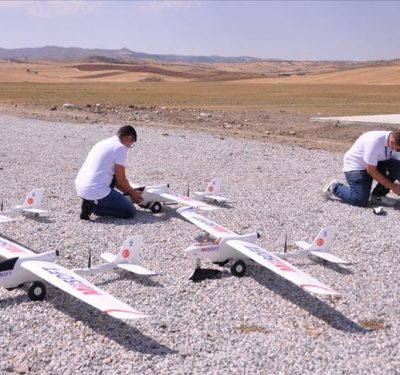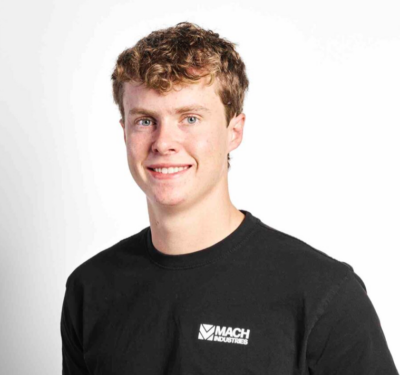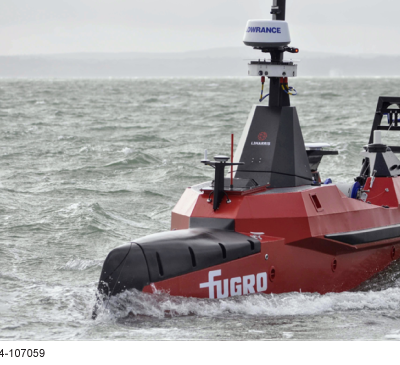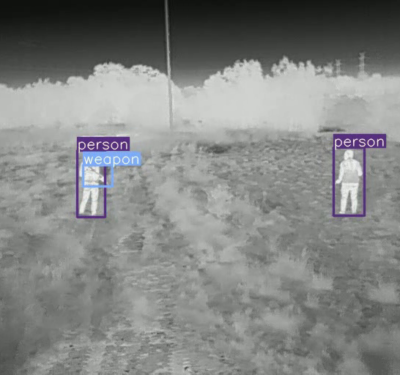How one computer vision company is turning passive surveillance into proactive protection—across schools, cities, federal agencies and the autonomous battlefield.

ZeroEyes has steadily grown in both public safety and defense technology. Originally founded in response to the 2018 Parkland shooting, the company began with a deceptively simple idea: leverage computer vision to detect brandished firearms in real time using existing security camera infrastructure.
Initially, the company focused on school safety, rapidly expanding its footprint into hundreds of school districts. But as Chief Strategy Officer Kieran Carroll explained, the mission quickly evolved. “COVID happened. We sort of refocused into the commercial enterprise world,” he said. “Fast forward to 2025, and we’re in hundreds of school districts around the country and higher ed. We work with a ton of Fortune 500, Fortune 100 companies—third-party logistics, big box retail, manufacturing.”
As they refined their threat-detection capabilities, ZeroEyes also began pursuing opportunities in the public sector and defense spaces. “Transit is really big for us right now,” Carroll added. “And most of us came out of the Department of Defense. We’ve always wanted to build things for defense.”
What began as a mission to prevent shootings has evolved into a broader campaign to modernize surveillance and force protection systems across a variety of domains—from schools and subways to forward operating bases and unmanned platforms.
“We started with the idea that we can use computer vision software and overlay that on existing security cameras to detect visible brandished firearms,” Carroll said. “It turns out that was sort of a universal use case that’s widely applicable across all these cameras in different environments.”
Carroll and his team never lost sight of their roots in the Department of Defense. 70% of the company, roughly, is a military veteran.
The goal of building for defense took tangible form with Project Gargoyle, a 2020 collaboration with the DoD’s then-Joint AI Center (now the Chief Digital and Artificial Intelligence Office, or CDAO), designed to enhance force protection through better threat detection from G-BOSS towers deployed in CENTCOM areas of operation.

GREEN-SCREEN INNOVATION: A UNIQUE APPROACH TO DATA GENERATION
The challenge wasn’t just building algorithms—it was acquiring the right data to train them on.
“There’s just not a lot of great data out there that’s publicly available,” Carroll explained. “So, we said, could we build our own datasets for threat recognition?” The answer came in the form of an unlikely innovation: a green-screen lab in a converted barn. “During COVID, we turned it into a green screen lab and were able to de-risk and deliver something a lot cheaper than the DoD originally wanted us to do.”
That success led to a more advanced 5,000-square-foot green-screen facility near Philadelphia, purpose-built by a Hollywood production expert. The lab now serves as the heart of ZeroEyes’ data generation engine, enabling highly specific modeling for client needs, from urban combat scenarios to maritime surveillance.

PARTNERSHIP WITH HAVOC AI: ENABLING SMARTER MARITIME AUTONOMY
It was this capability that caught the attention of Havoc AI, a company specializing in maritime autonomy. “They obviously need good navigational data. They need detect and avoid. Eventually, they’ll probably need some sort of targeting data as well,” Carroll said. “We started with their existing datasets, and then we augment those in our lab.”
This collaboration was formalized in March 2025, when ZE Government Solutions (ZEGS)—a wholly owned subsidiary of ZeroEyes—announced a strategic partnership with HavocAI to deliver advanced, customized computer vision solutions. These will be integrated directly into HavocAI’s cutting-edge maritime autonomy platforms.
“ZeroEyes has mastered the ability to build and deploy customized computer vision solutions for a wide range of government customers,” said Dustin Kisling, executive vice president of ZEGS. “We are very excited to partner with the HavocAI team, who are leaders in deploying maritime autonomy and unmanned surface vessels for critical national security mission sets.”
The partnership highlights HavocAI’s goal of enabling a single operator to control thousands of autonomous surface vessels, offering scalable and cost-effective defense solutions. “We are thrilled to partner with the ZeroEyes team, many of whom are military veterans, to work with us on developing and delivering computer vision capability to our defense customers,” said Paul Lwin, CEO of HavocAI. “These capabilities will help us to build mission-critical aspects of our autonomy platform.”
This partnership illustrates a core differentiator for ZeroEyes: they don’t just build AI—they build the datasets that make AI work. Carroll emphasized their commitment to quality over quantity: “People took the quantity approach more than the quality approach. But we’re believers in quality.”
Unlike many AI companies that outsource data labeling, ZeroEyes insists on keeping this work internal—a key decision that reflects the company’s emphasis on accuracy and security.
“Our data annotation team and labeling team is fully in-house,” Carroll said. “They are doing the blocking and tackling of actually drawing boxes around things that we need in our dataset.”
Carroll explained that their team reviews each frame to assess its usefulness before it’s incorporated into training models. “Not all of it’s good data,” he said. “So our team has to go through and make sure it’s actually useful. We have a proprietary way of labeling and grading data quality.” This meticulous approach sets them apart in an industry often driven by volume over precision.
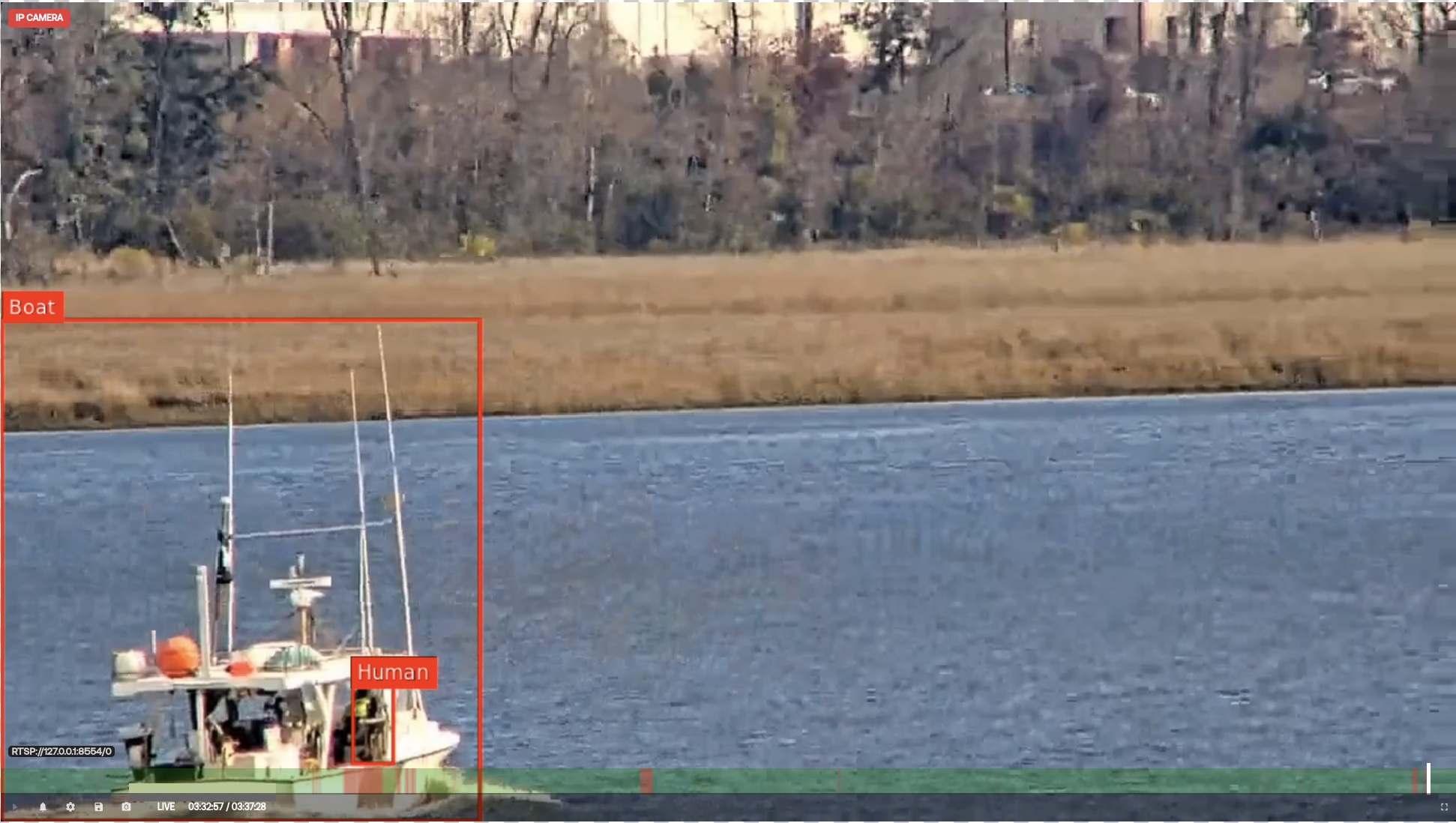
A HANDS-ON, HYBRID MODEL
ZeroEyes’ modeling process is hands-on and often hybrid. For maritime autonomy, Carroll said, “We’ve actually gotten out on boats and gone and collected real-world data. And then we come back to the lab to extrapolate and accelerate the dataset generation.”
A major strength of the ZeroEyes platform lies in its adaptability. Its firearm detection software doesn’t require a rip-and-replace overhaul—it enhances what’s already in place.
“Typically, our commercial installations involve the deployment of a network-integrated appliance analyzing live video feeds for visual firearm detection,” Carroll said. “Once the analytic detects something, what comes off the network is essentially a text message—timestamp, geolocation and some metadata.”
From there, the alert is reviewed in one of two 24/7 operations centers—one located in Pennsylvania, the other in Hawaii—and then dispatched to the customer’s choice of endpoint. These can include local law enforcement, school administrators, video management systems (VMS), mass notification systems or common operating picture (COP) tools.
“We integrate into existing workflows,” Carroll said. “Whether it’s access control, VMS, alerting systems, or even radios, we meet the customer where they are. For example, we’ve partnered with several major metropolitan transit systems where our software interfaces directly with their existing video management platforms. That means they don’t need to change a single piece of hardware—we simply plug in and begin providing real-time threat detection from day one.”
This plug-and-play approach extends to federal customers as well. Although many currently manage internal review workflows, ZeroEyes is developing a FedRAMP-compliant operations center to serve agencies that rely on outdated infrastructure. “We’re paying people to watch three-by-three tile videos in operations centers all over the federal enterprise,” Carroll said. “It’s just not effective.”
ETHICS BY DESIGN: GUARDRAILS AGAINST OVERREACH
Importantly, ZeroEyes draws a firm ethical line around privacy and civil liberties. “We don’t do facial recognition or behavioral profiling,” Carroll said. “We’re trying to stay away from those things from a Fourth Amendment and Second Amendment perspective.”
In the federal space, ZeroEyes is expanding beyond firearm detection to include other threat objects like radios, cell phones, and cameras—particularly in sensitive environments like embassies. For the DoD, they’re building intrusion detection capabilities and object recognition models that can be deployed on unmanned platforms—UAS, UGVs, and USVs—
either for force protection or autonomous navigation.
THE BROADER VISION: STRENGTHENING GOVTECH AND NATIONAL SECURITY
Carroll sees this as a key contribution to national defense and GovTech innovation more broadly. “We want to help defense-first companies that are out there trying to solve these really hard problems. Autonomy is getting so advanced so quickly… computer vision is a really critical piece of that. And we’re realists—we know there’s a lot of legacy infrastructure that isn’t going away tomorrow. So we’re building solutions that can integrate right now, not just in a decade. That’s the practical reality we’re facing, and we want to be the ones helping the government get through that transition period effectively.”
He’s optimistic about the road ahead. “I’m very bullish on where this is going for America. We have a lot of really smart people working on this problem. We have a lot of really good companies that have been put together for the right reasons.”
In the near term, ZeroEyes will continue focusing on upgrading legacy systems—especially where full-scale replacements remain financially or logistically out of reach. “With the funding requirements cycle and the POM cycle and all that, it’s going to be a decade before we are able to really put the next generation of base force protection systems in place,” Carroll said. “So, we have to have a stop gap. And one of the stop gaps is upgrading it with better capability that can sort of plug into the existing infrastructure.”
From school safety to maritime autonomy, from DoD installations to urban transit systems, ZeroEyes is building a future in which AI doesn’t just observe threats—it helps prevent them in real time. And it’s doing so with a mix of military discipline, Hollywood creativity and technical rigor.


